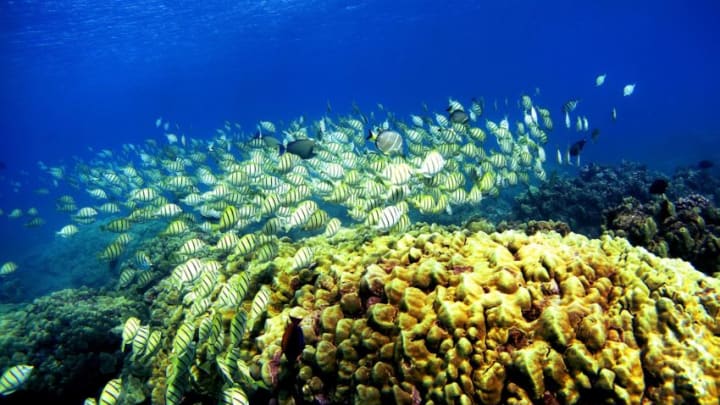Hawaii is one of the most popular travel destinations in the world, and for good reason. Marvelous weather. Stunning beaches. And there are more than a few places to go snorkeling, like Oahu’s gorgeous Hanauma Bay.
In an effort to protect it from throngs of returning tourists, Hawaii has been instituting new rules. That includes increased access fees and limiting the number of people who can go each day. Honestly, the government is making the right call.
Changes to Hanauma Bay
Hanauma Bay has long been a popular destination for both locals and tourists alike. Its natural beauty and rich abundance of wildlife make it a marvelous spot to chill on the beach or spend the day snorkeling.

That being said, the Hawaiian government has been working incredibly hard for decades to protect it from overuse. Visitors used to flock to Hanauma Bay in such numbers that the natural aspects of this destination were almost entirely destroyed.
Post-pandemic, those efforts are being ramped up rather dramatically. Locals can still get in for free with a state ID but the price per person for visitors has jumped to $25.00. When you’re dealing with a carload of people, that can add up pretty quickly.
Additionally, a relatively new reservation system was put into place earlier in the year. This is designed to limit the number of people in the park at any one time and over a day. You have to book a time online and observe it closely. This applies to both residents and non-residents.
Why the changes are happening
Not everyone has responded positively to the access changes to this valuable resource and popular destination. Tourists, in particular, have been outraged by it to an extent, which isn’t surprising given the increased charges directly target that group.
But it’s hard to deny the impact tourists not being there has had over the last year. The environment of Hanauma Bay is healthier than it’s been in decades which is due to not being subjected to hundreds of tourists per day, if not more.
Visitors from outside of the state are not always as respectful of the protected area as they should be. Most are good but there are always a few who don’t quite do what they’re supposed to. As such, removing them from the equation has had a promising impact on the environment.
As pandemic travel restrictions have eased, tourism in Hawaii has ramped up dramatically. That’s obviously great for the economy but it’s already putting a strain on a lot of services and popular destinations. Hanauma Bay is certainly one of them.
Hanauma Bay is worth protecting
Anyone who has ever been fortunate enough to spend some time at Hanauma Bay knows exactly how special this place is. It’s no surprise that people want to go there, particularly tourists. That’s why it needs to be protected.

Hanauma Bay is home to a wonderous but fragile ecosystem, specifically its coral reef. The gains that have been made over the last year are unprecedented. It took decades to build that kind of recovery under regular conditions.
Managing and restricting access to Hanauma Bay on a daily basis only makes sense. It is the best way to protect those gains and hopefully build on them. Limiting the number of people per day and charging more for the park’s use is part of that process.
While it’s understandable that these changes will rub people the wrong way, the simple reality is that they need to get over it. Hanauma Bay is a wonderous natural space that cannot be replaced or rebuilt if it is ever fully destroyed. These measures will help keep that from happening.
